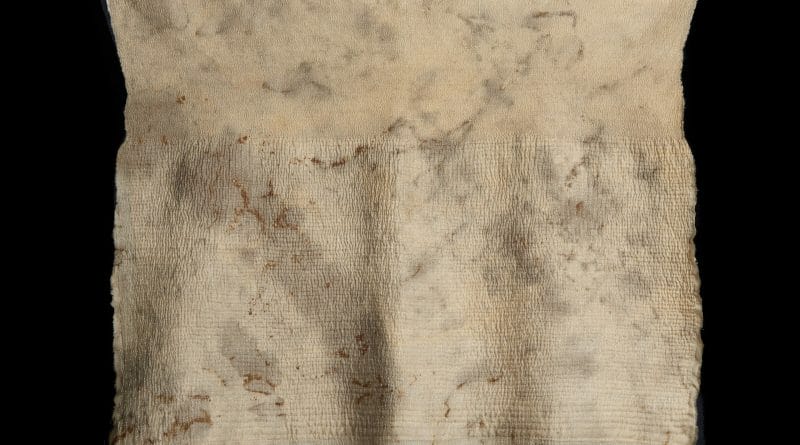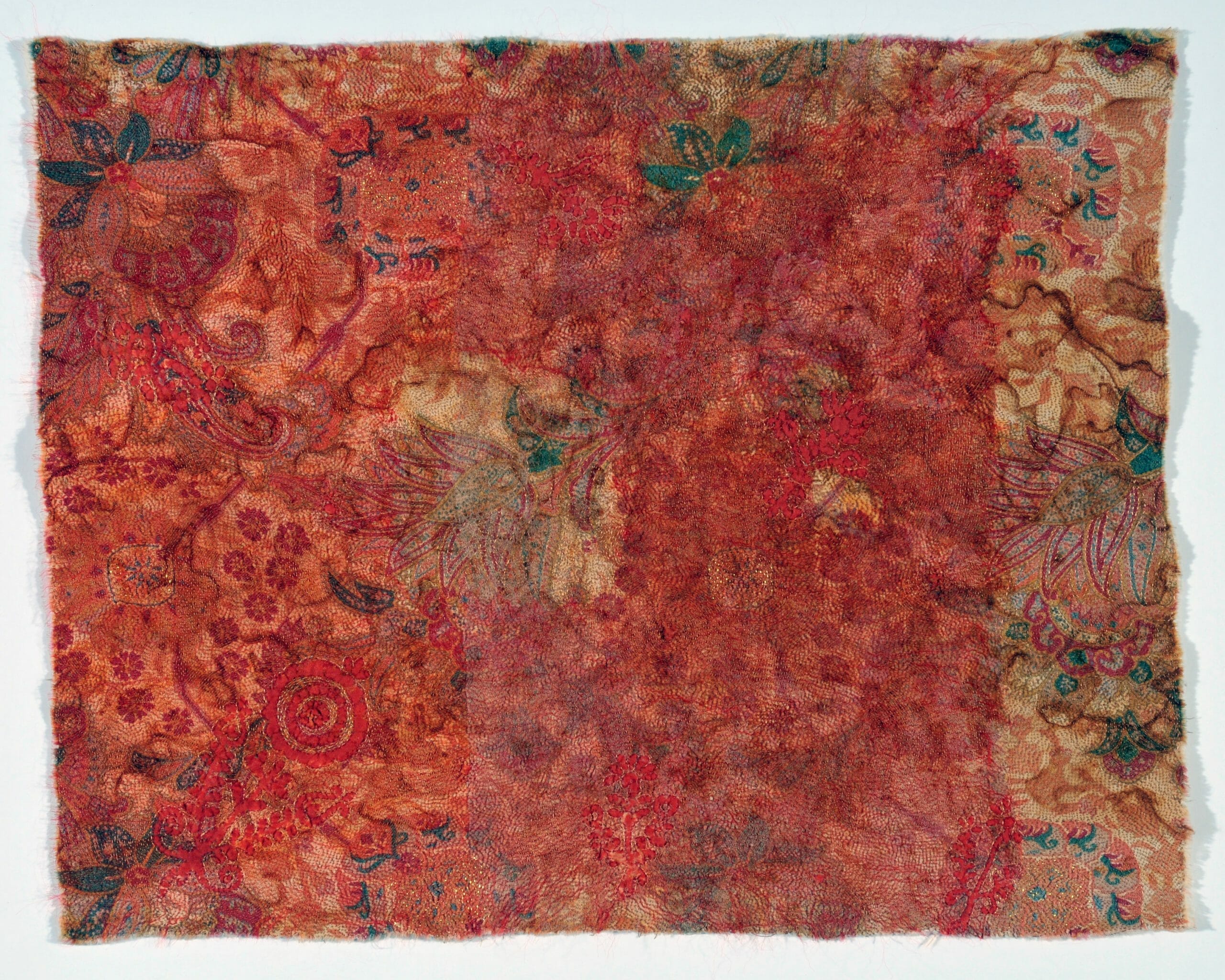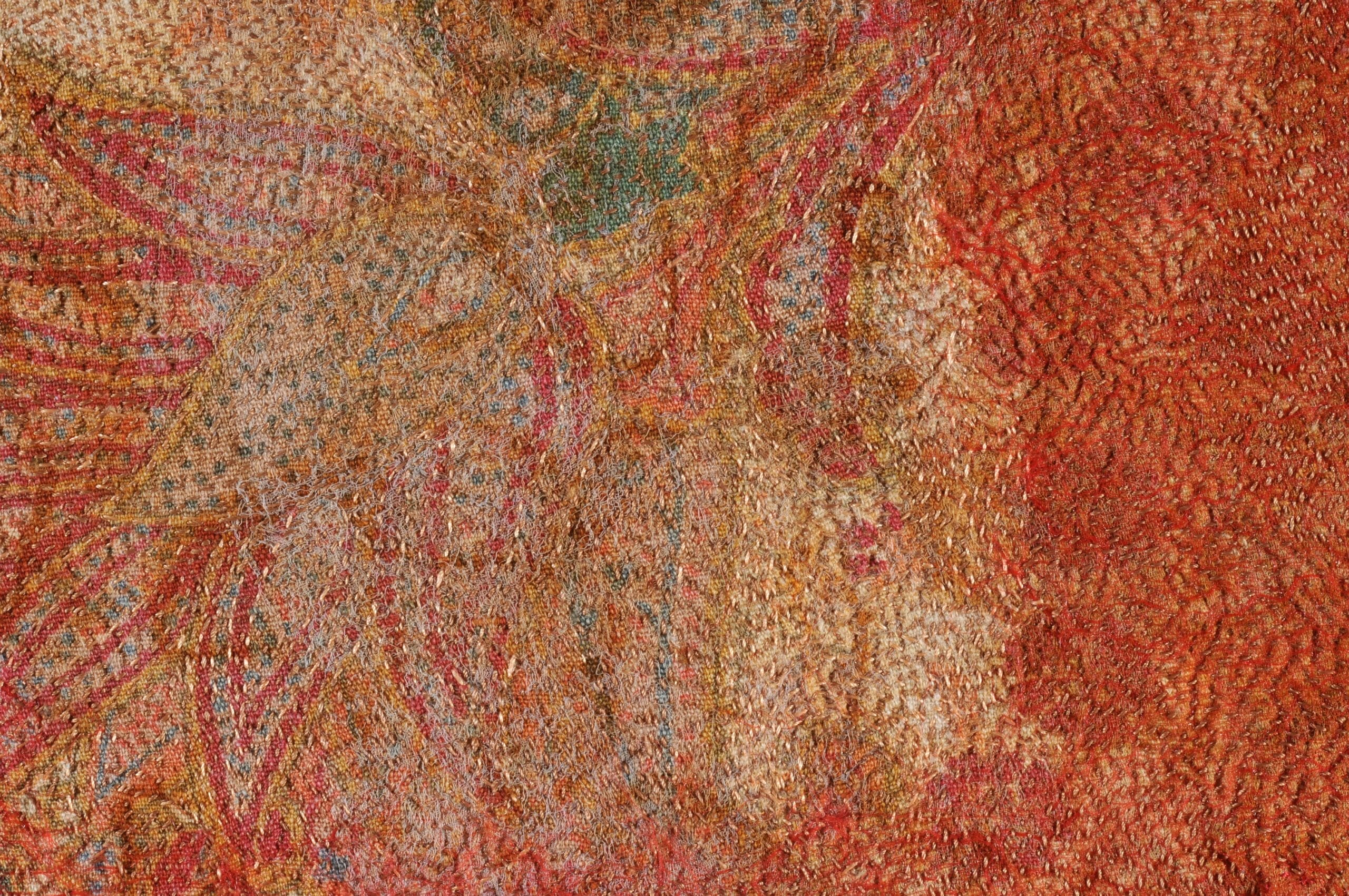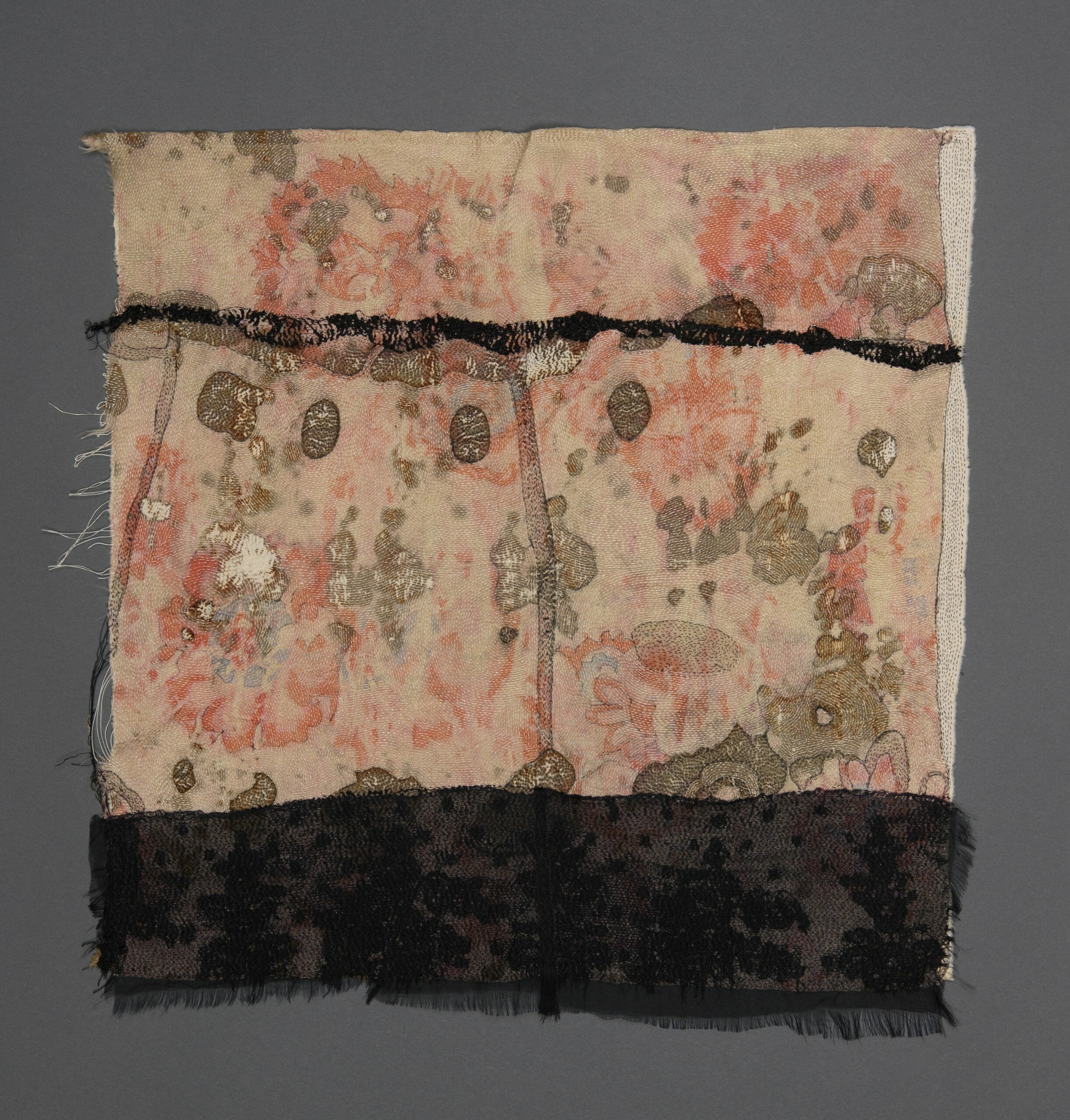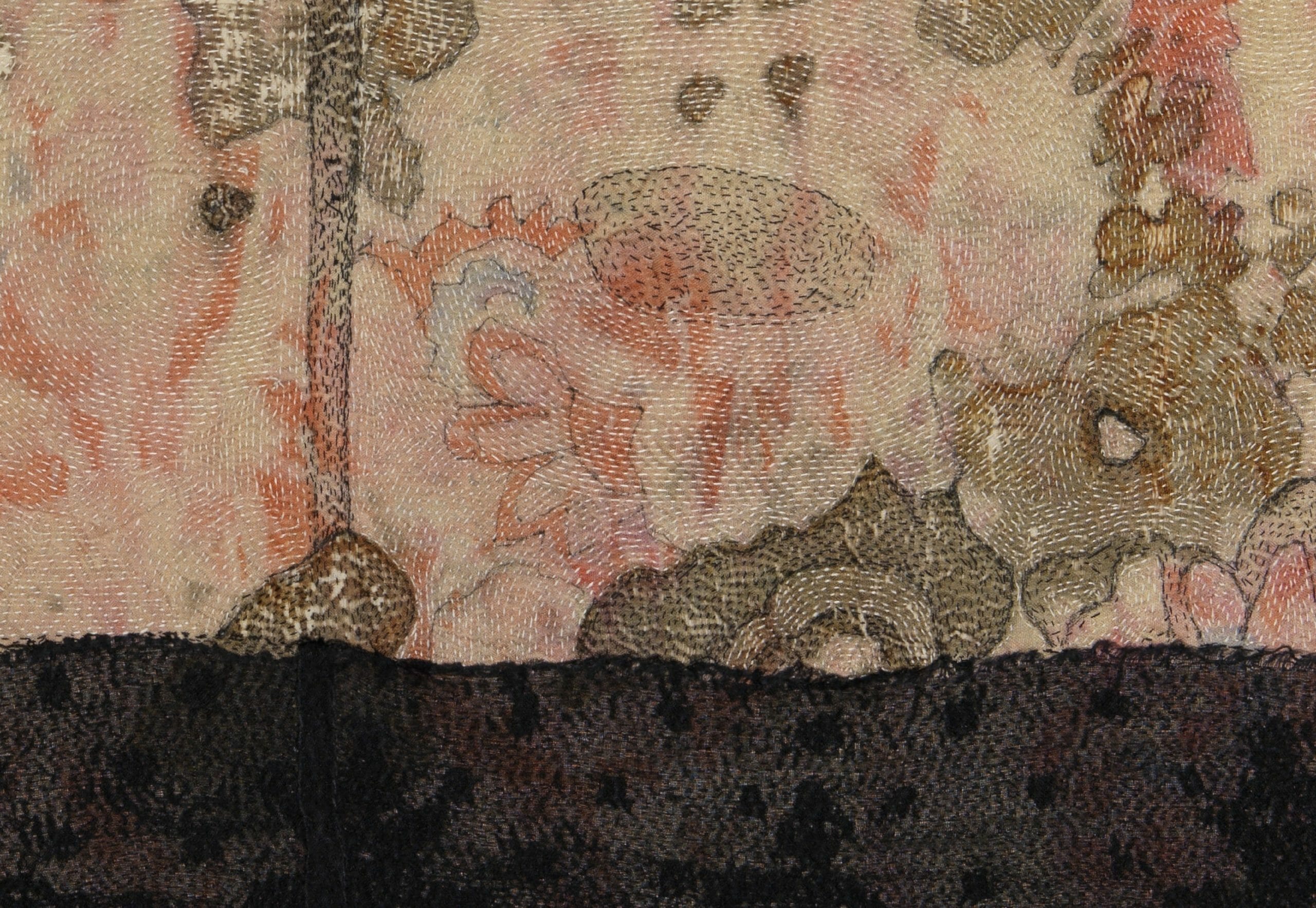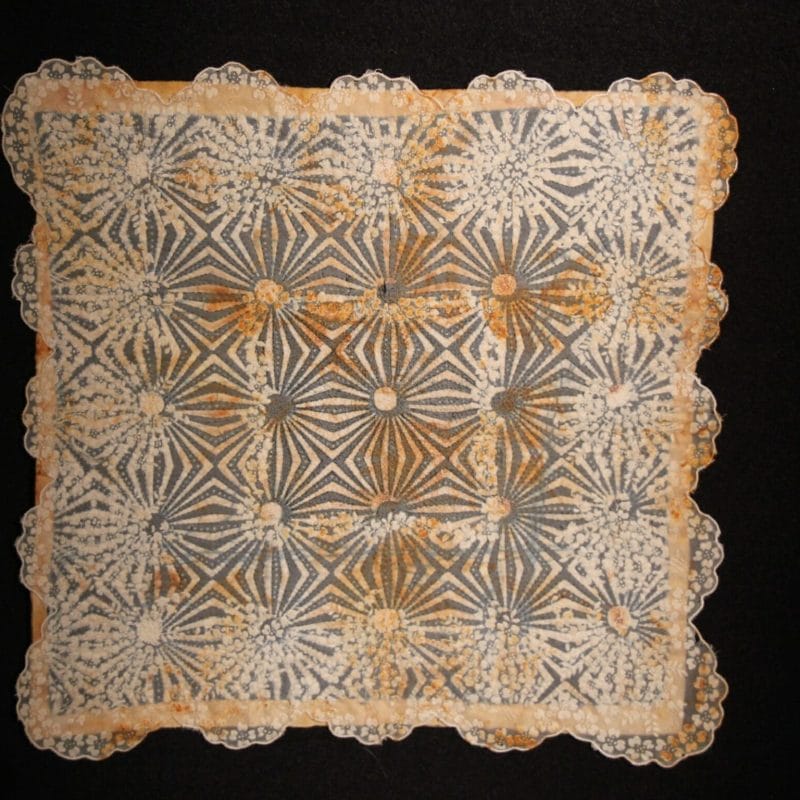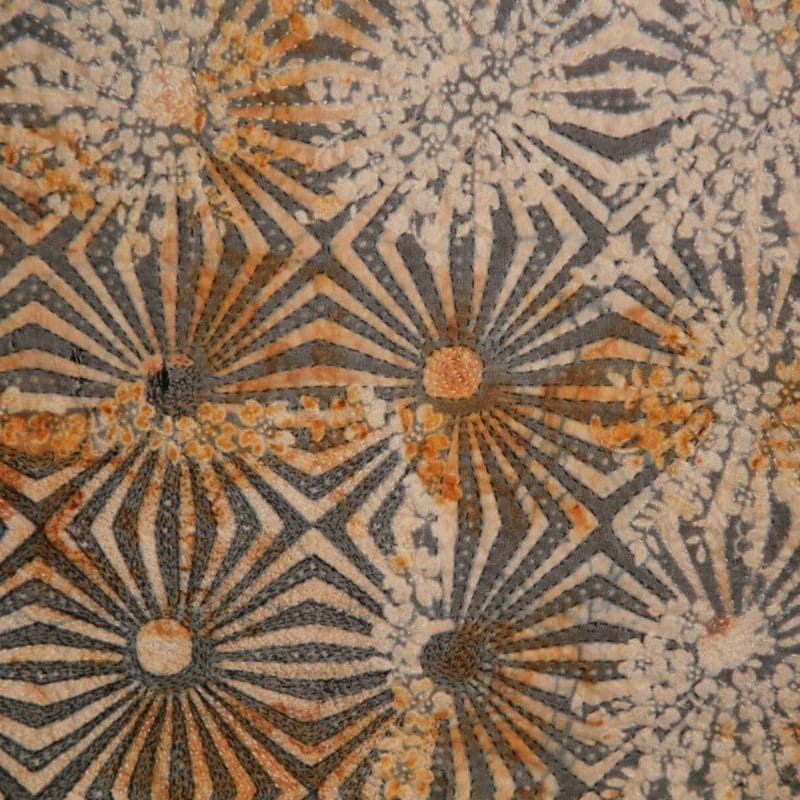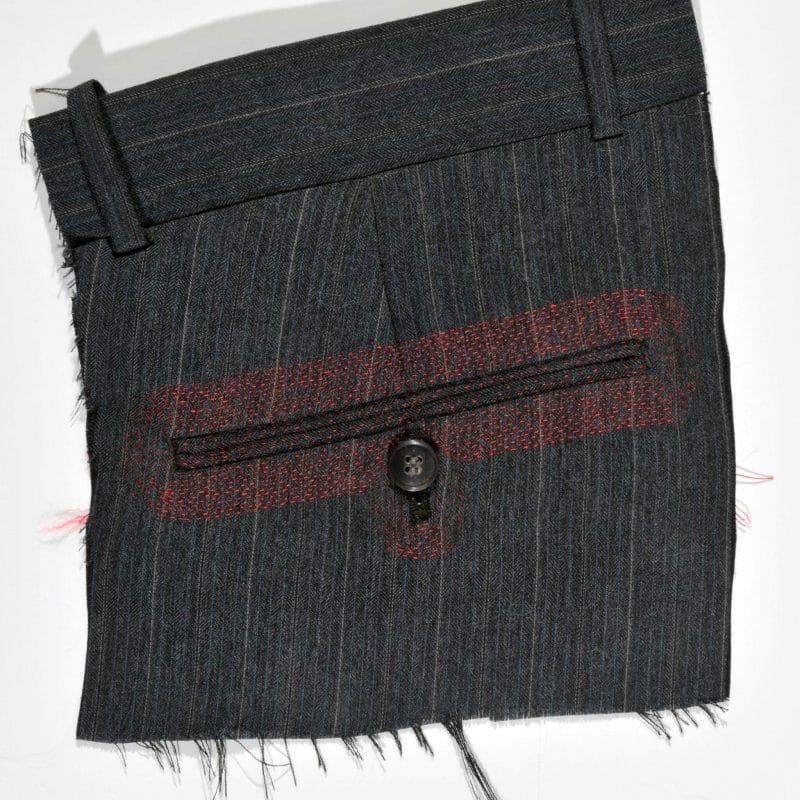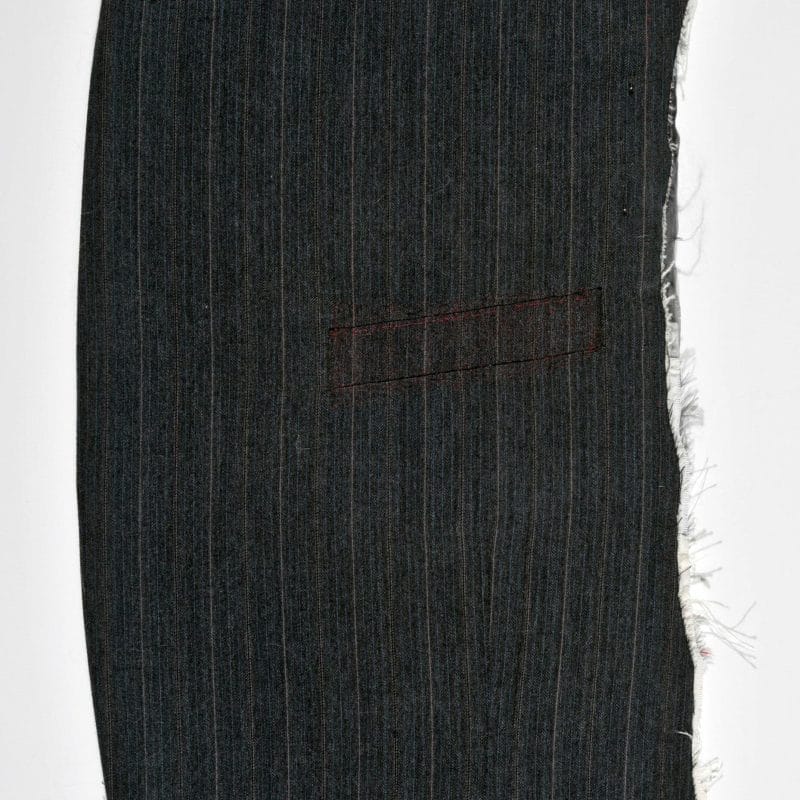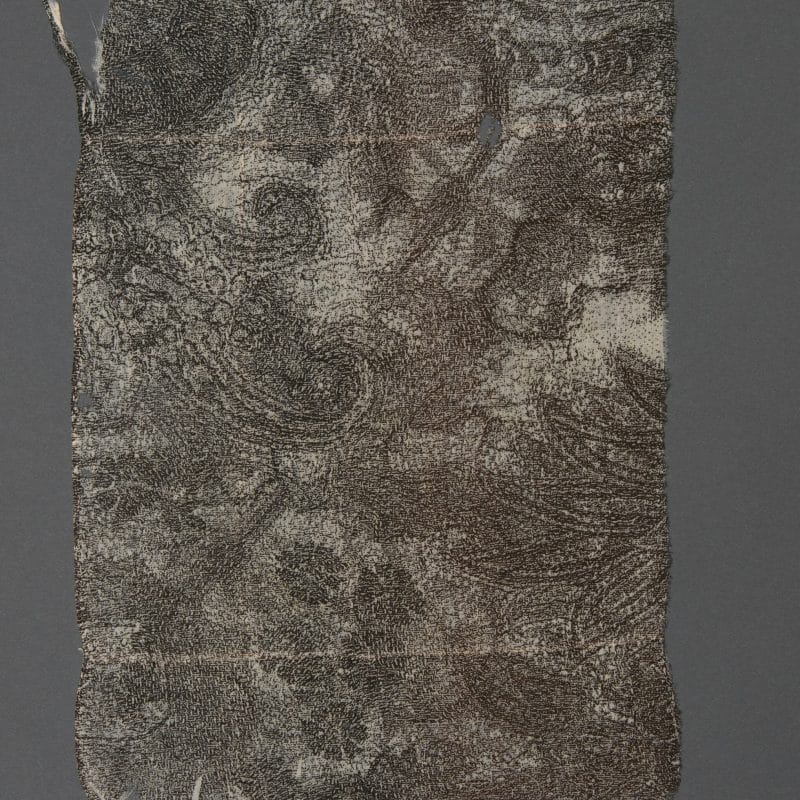CAMILLA BRENT PEARCE
*Fetured photo: Continuo. 2021. 30 ¼ “ w x 26” h (including fringe). Vintage silk, cotton batting, wool. Rust and eco-dyed, handstitched with silk and metallic threads. Sewing needle. 2021. Photo Credit: Alex Jones Photography, copyright Camilla Brent Pearce
Pittsburgh-based fibre artist Camilla Brent Pearce graduated from the Kansas City Art Institute and received her MFA in painting from Washington University in St. Louis.
After her training, Pearce finds her voice in textiles, favouring a process that allows her to partially free herself from the purely formal aspects of artistic creation. In doing so, she leaves room for the possibility of entering into a personal and emotional dialogue with the materials, thus becoming the artist’s language of expression.
Her work has been exhibited internationally and across the U.S., including the Milwaukee Art Museum, the Parliament House in Sydney, Australia, the Cleveland Museum of Art, the Canton Museum of Art, Society for Contemporary Craft and the Pittsburgh Center for the Arts. In addition, her artworks are included in the permanent collections of the University of Wisconsin/Madison and the Cleveland Museum of Art.
With Continuo, Pearce is currently exhibiting at Fiberart International 2022, a major international fibre art event. In this interview, among other subjects, the artist talks about the genesis and development of this personal and meditative work and the theme it addresses.
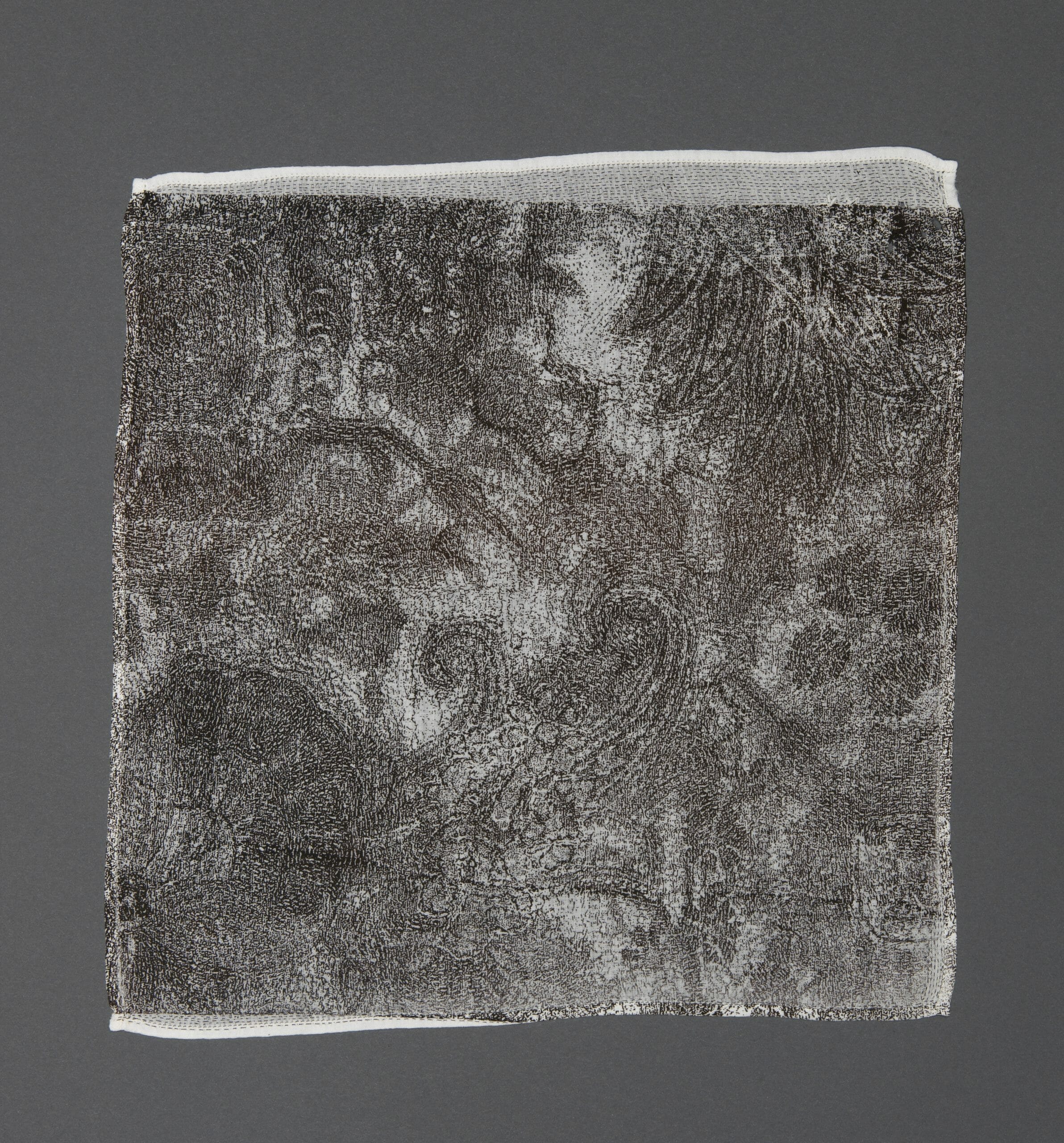
How and when did you get into textile art? What was your training path?
My mother sewed, knitted, and was a quilter. She taught me to sew at age 8 or 9 and I have continued (time permitting) making a significant portion of my own clothing, considering it another creative outlet in addition to artmaking. My father was an architect, and his father was an interior designer, so art, design and making is part of the family DNA.
I started at the Cleveland Art Institute (Cleveland, OH) my hometown – focusing on traditional, representational studio art, with a minor in Fibers (under Wenda von Weise and Jane Sari Berger) I completed my BFA in Fiber at the Kansas City Art Institute with Jason Pollen (Surface Design) and Jane Lackey (Weaving.) While at KCAI I took a number of printmaking, papermaking and drawing electives and incorporated those processes into my work in fiber.
After much consideration (Art V Craft) I pursued a Masters in Fine Art in Painting at Washington University in St. Louis, MO, studying w James McGarrell and Martin Ball. I was making large organically inspired abstract paintings but after my first year of the two-year program had a “crisis of faith” and threw the entire year’s body of work in the dumpster as I cleaned out my studio for the summer. While a huge waste of materials this was an incredibly cathartic and was exactly the reset needed to find a process and voice more true to myself – combining fiber, sewing, ceramics, text, collage and found materials. At the same time the work benefitted from a more critical/conceptual rigor rather than simply focusing on formal concerns. This has been helpful moving forward, especially working in a medium that is process focused and labor intensive to not get lost entirely in process.
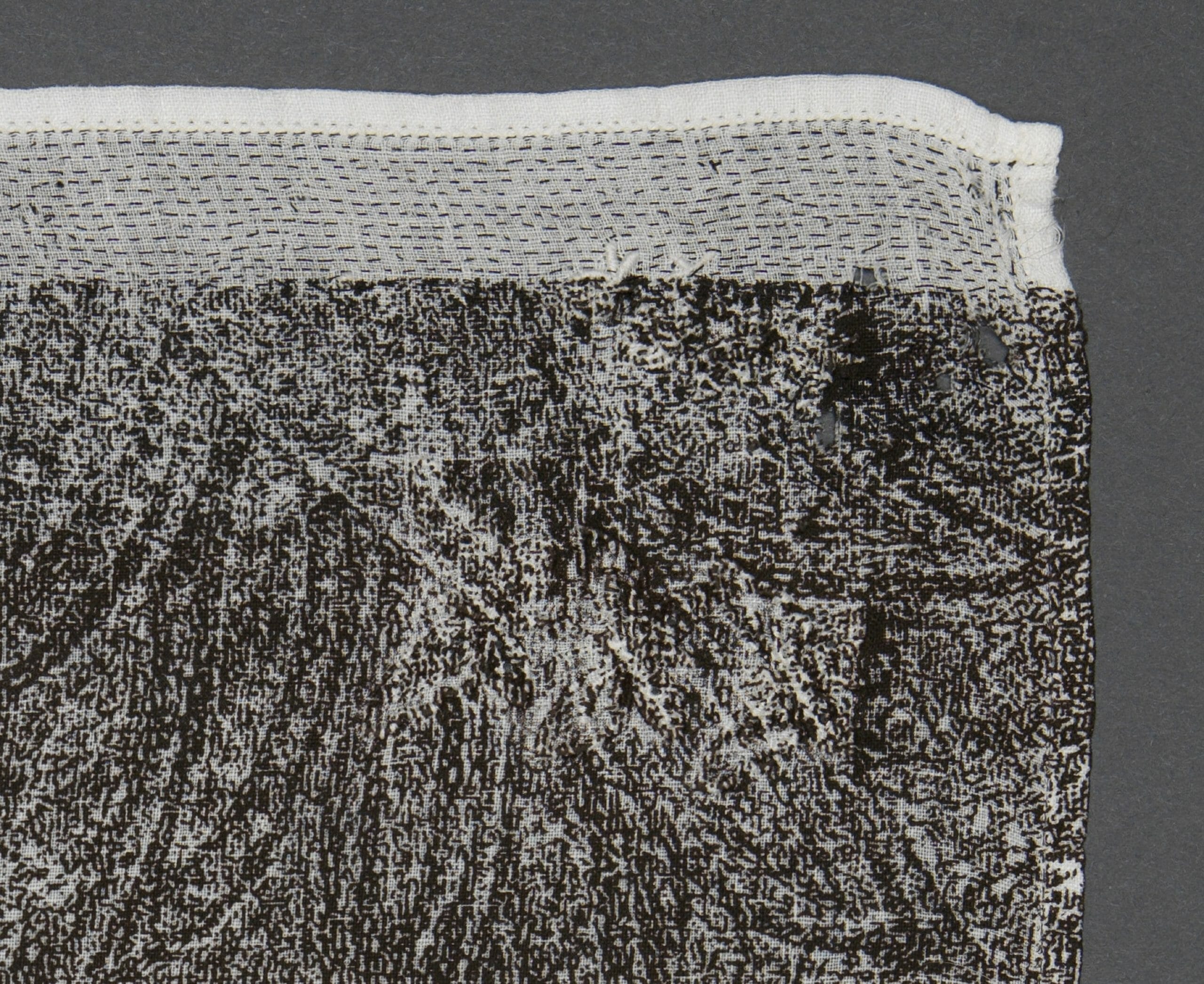
How and when did you get into textile art? What was your training path?
My mother sewed, knitted, and was a quilter. She taught me to sew at age 8 or 9 and I have continued (time permitting) making a significant portion of my own clothing, considering it another creative outlet in addition to artmaking. My father was an architect, and his father was an interior designer, so art, design and making is part of the family DNA.
I started at the Cleveland Art Institute (Cleveland, OH) my hometown – focusing on traditional, representational studio art, with a minor in Fibers (under Wenda von Weise and Jane Sari Berger) I completed my BFA in Fiber at the Kansas City Art Institute with Jason Pollen (Surface Design) and Jane Lackey (Weaving.) While at KCAI I took a number of printmaking, papermaking and drawing electives and incorporated those processes into my work in fiber.
After much consideration (Art V Craft) I pursued a Masters in Fine Art in Painting at Washington University in St. Louis, MO, studying w James McGarrell and Martin Ball. I was making large organically inspired abstract paintings but after my first year of the two-year program had a “crisis of faith” and threw the entire year’s body of work in the dumpster as I cleaned out my studio for the summer. While a huge waste of materials this was an incredibly cathartic and was exactly the reset needed to find a process and voice more true to myself – combining fiber, sewing, ceramics, text, collage and found materials. At the same time the work benefitted from a more critical/conceptual rigor rather than simply focusing on formal concerns. This has been helpful moving forward, especially working in a medium that is process focused and labor intensive to not get lost entirely in process.
With the work Continuo you are participating in Fiberart International 2022. Can you tell us about its genesis and significance?
Continuo is a very personal work. I started rust and eco-dyeing in the early 00’s, inspired by a fellow member of the Fiberarts Guild. Instead of using steaming and mordants for immediate results I was more concerned with marking over time, and often would wrap metal with salt-soaked fabric and leave in tea or coffee baths for days or weeks, rewrapping the material to change the transfer pattern of the rusted metal. This was the process I used for the top silk layer of Continuo. It is layered silk, batting and wool, with a silver grid overlaid (inspired by Agnes Martin’s field paintings and Lenore Tawney’s ink drawings. The fill stitching is silk, all done by hand. It is very labor-intensive, but I have not found a substitute mechanical process that gives the same feel and look to the work. I also find the stitching to be very meditative and once the pattern is established, I can stitch (since it is a simple running stitch) practically anywhere there is enough light, since the work is quite portable, and usually work while watching television or listening to podcasts or books on tape.
For more background – here is the statement included with the submission to Fiberart International. An edited version is the statement in the exhibition catalog.
Continuo – Take 1
My work is about time and process. The two are intertwined – time is referenced not only in the materials used (salvaged antique kimono, upholstery fabric and vintage clothes) – but also the processes and tools involved. The element of time also factors into my chosen working methods –hand-stitching and rust-dyeing. I am attracted to materials that have a past history— often they are worn, and patched, showing the former life of the fabric. Rather than eliminating the patches and darns I choose to highlight them – making them a point of interest.
Originally, I started incorporating stitching in my work to reference traditional quilt-making. The running stitch is used in functional quilts to create a third layer of pattern (in addition to the design of the quilt and the print of the fabrics included). In early work on this theme I used the running stitch as decoration, and as a tool to “quote” traditional quilt patterns. In more recent work the piece is entirely covered with these dense running stitches, so the stitching creates not only a texture, but a color field. Although this could be done with a sewing machine I feel strongly that the hand has to be evident in the work, and the quality of hand-stitching is totally different than anything done through mechanical means. The investment of time spent stitching in its own way also pays homage to the history inherent in the found fabrics I use, and in many instances to the person it had originally belonged to.

Continuo – Take 2
August 30, 2021 would have been our 19th Anniversary, had my husband lived past age 42. This piece was started in 2005 (the era of the artist statement above), and completed in in August this year after a hiatus not only from this piece but from artmaking in general. I know myself enough by now to know that once started I need to complete things. Books, movies – relationships. Even if I hate the characters or the writing, or in the case of Dan – the ending. Continuo (titled for the ongoing email conversation using the same thread we kept going throughout our marriage) is the largest whole cloth stitched piece I’ve attempted. It was my constant companion – part security blanket, part make work to keep hands and mind busy while sitting in a succession of hospital and hospice rooms, first with both parents in Cleveland and then Pittsburgh with him. Afterwards, as much as I loved the piece, it was just too specific. With no end in sight, but not ready to toss it (once started/must finish) I put it – same ratty Ziploc bag, thread and needle in mid-stitch – in a drawer. It got pulled out occasionally –anniversaries mostly- testing my stomach to return to the work. Listening for whether it spoke differently this time. When it didn’t, back in the drawer. In subsequent years – no matter whether wildly busy, creativity focused on making other things or through what seemed to be an interminable art dry spell of the past several years – it maintained its radio silence. Until recently.
The past few weeks have been a marathon – too little sleep and incredibly sore hands, but finally at a stopping point. With so much in life having changed since starting in 2005 – the process for its completion was different too. Still stitching – my familiar- but more riff like Dan’s jazz sax playing-loosening the grip of the tiny stitches from Part I which were beautiful but ultimately unsustainable. The needle is still there in mid-stitch, the decision whether to tidy up the ending or to leave loose ends hanging was a conscious decision. Art imitating life? Check. One WIP down. Check. Two? Maybe.
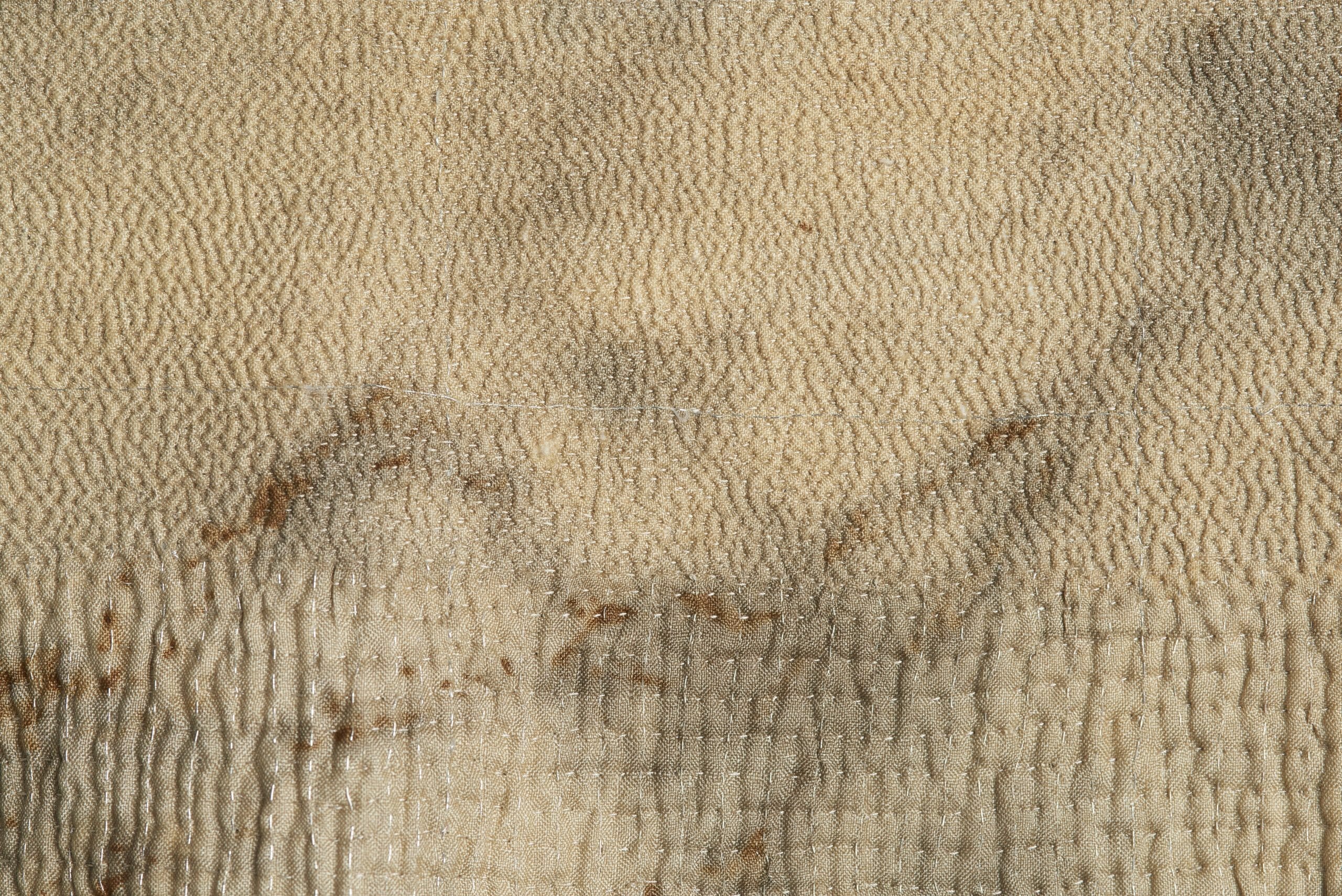
Are there any contemporary artists that you feel are close to your research and language?
So many, but to name a few – I I appreciate the work of Dorothy Caldwell and India Flint for their exploration into of non-traditional mark making and colorations, Kusama for her obsessive patterning and dedication to a focused way of working, El Anatsui in his creative reuse of discarded materials into things of beauty.
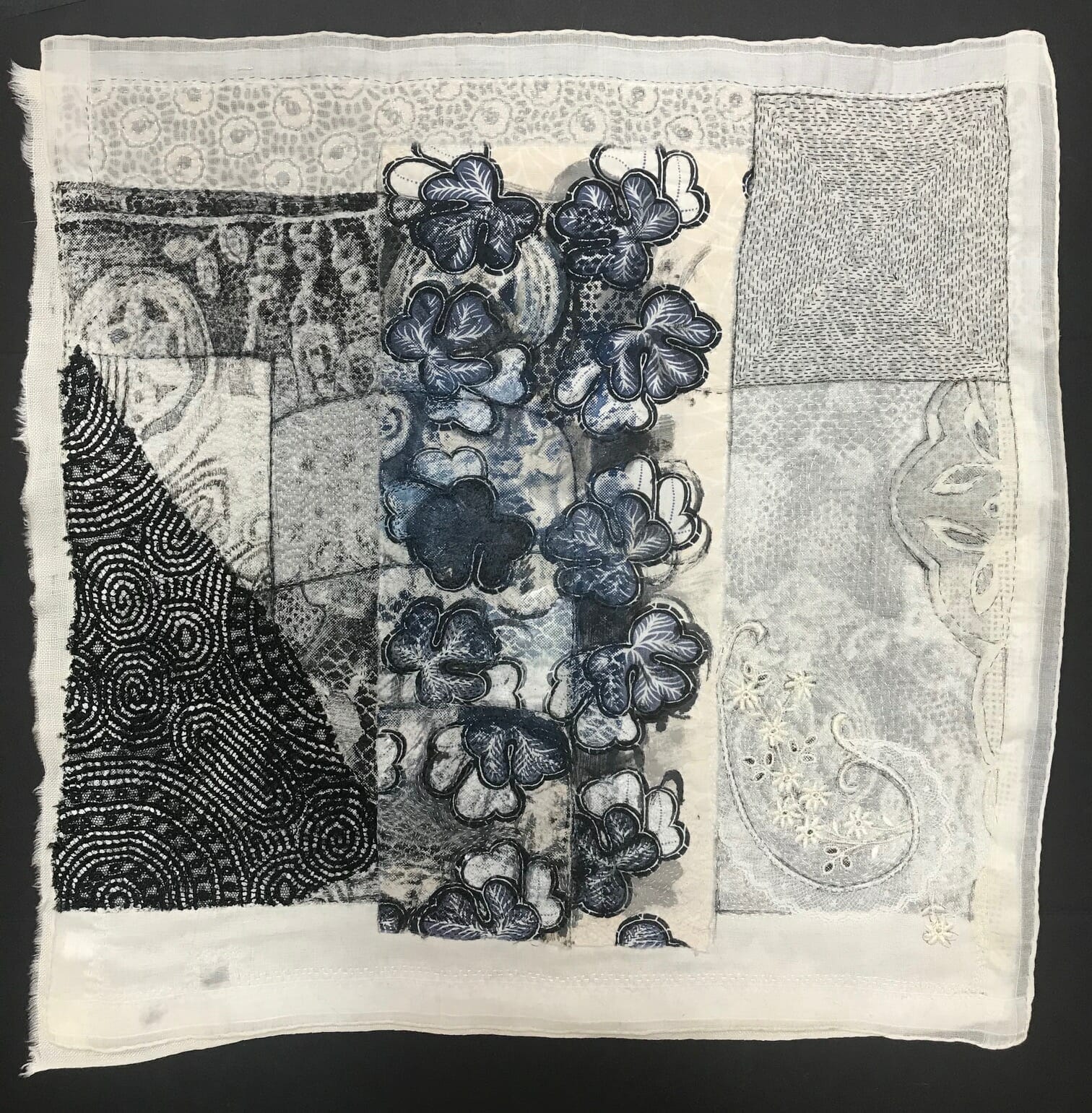
What is a typical day in your studio like?
I can’t say there is a “typical” day in my studio since I am balancing artmaking with a fulltime job not in the visual arts, (I am a fundraiser with the Pittsburgh Symphony), so art is done in bursts. I am coming out of an extended artistic dry spell – besides a piece made for an exhibition which went up the week before COVID which never had an audience past the opening- Continuo is the first piece I had made in several years. I was still sewing garments (30 during COVID and still counting) and taking pictures for creative oulets in addition to an everchanging perennial garden, but did not focus on object making or fiber work. My practice is usually to have several pieces going at the same time – I’ll spend an afternoon or full day putting fabrics together – sorting, ironing, then establishing the layers and the concept for the stitching, so the thought work is done in a focused block, and the actual stitching can happen time permitting.
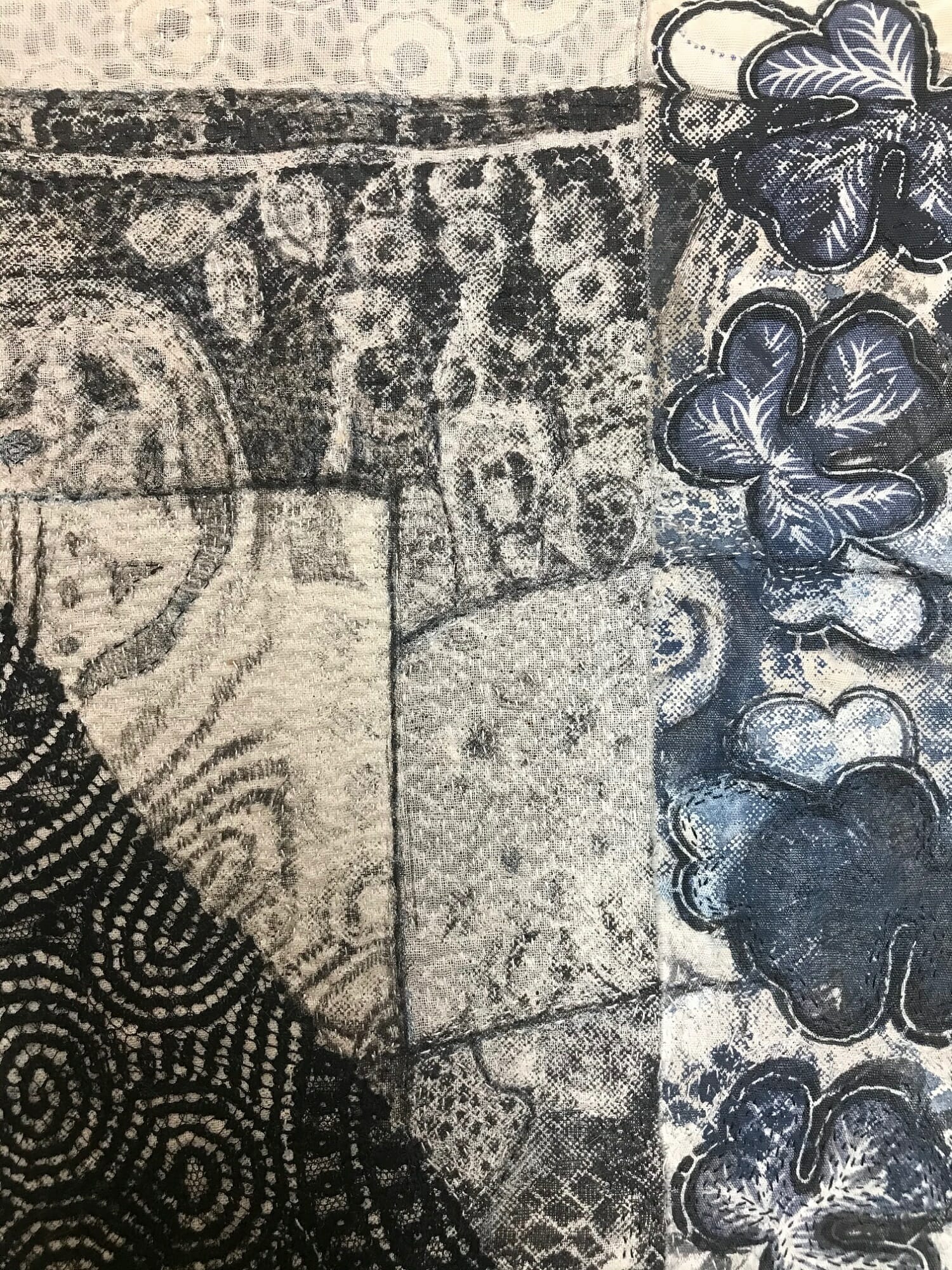
How important is it for an artist to have access to a prestigious event like Fiberart International?
I find having access to exhibitions like Fiberart International (whether as a participant or viewer) is very important. As a member of the Fiberarts Guild (and volunteer in various capacities for the exhibition over the years) it is gratifying to see the enthusiasm with which the show is received, and the quality and breadth of work being made world-wide. It highlights the vitality and innovation of the field and artists pushing the traditional boundaries of what is fiber and how it is used.
A work or project that you are particularly attached to or that has played an important role in your professional development?
Hard to choose one – there are many for different reasons, but I guess Continuo is that for me. I have found that I work best when there is a combination of formal and conceptual elements to a work, but a deep personal connection to the materials or the person they belonged to as an emotional base. In most cases it is not terribly important to me that the viewer is keyed into the personal story behind the materials, or the prior owner if they engage with the work on any of the other levels. In rare cases – an example, I made a series of stitched pieces using cotton from my husband’s boxer briefs (he had a fondness for wacky patterns and when they were too thin to wear, they went into my recycle pile.) The series was titled the Boxer Rebellion Series which requrired a bit of a backstory. My heart has been on my sleeve with Continuo – and it was helpful in both its making and through its completion as solace and biting through to a more regular art practice.
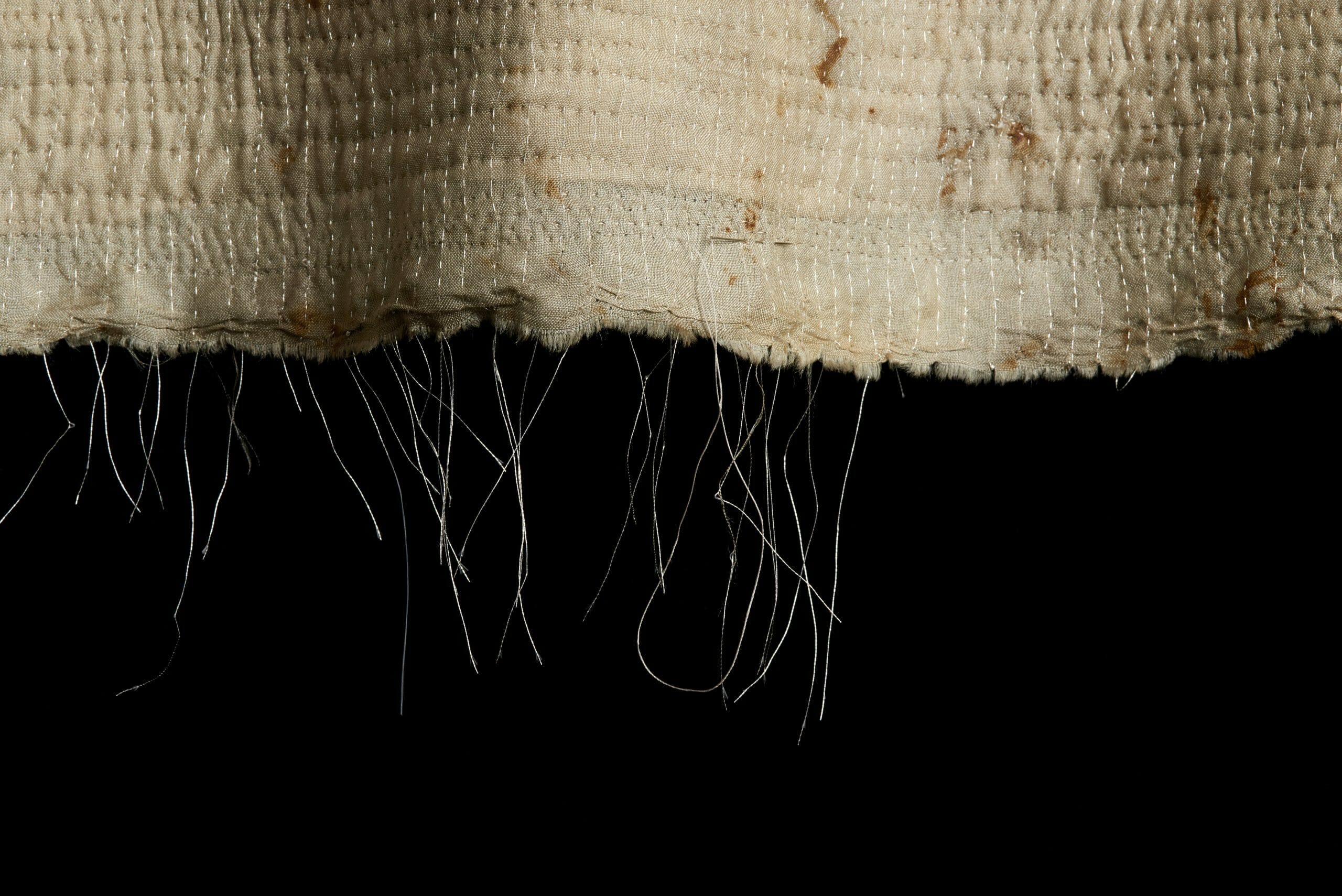
What are you working on at the moment?
I currently have two stitched pieces in process – one very large piece (4 x 6’) that is still in design/concept phase, so the work is quite slow. It combines rust and coffee-dyed silk chiffon over a linen panel with an oriental floral design salvaged from my grandfather’s interior design firm. I’ve been filling in the pattern with very fine running stitches and intend to use silver metallic threads in the background. I’m loving the flowing edges of the chiffon in combination with the sinewy lines of the vines and branches in the pattern, so in addition to the stitching fill work am also grappling with presentation and edges. I am also considering adding free form drawing on top of the layers but am not ready to commit yet.
The other is a small piece combining cotton organza photo silkscreened with a lace pattern and linen. I intend to draw back into/over the piece once the entire surface is stitched. Since I’m at the “fill stage” the stitching is kind of a no-brainer, and its nice to have something small that I can throw in a baggie and take with me wherever I go and have a few minutes.
